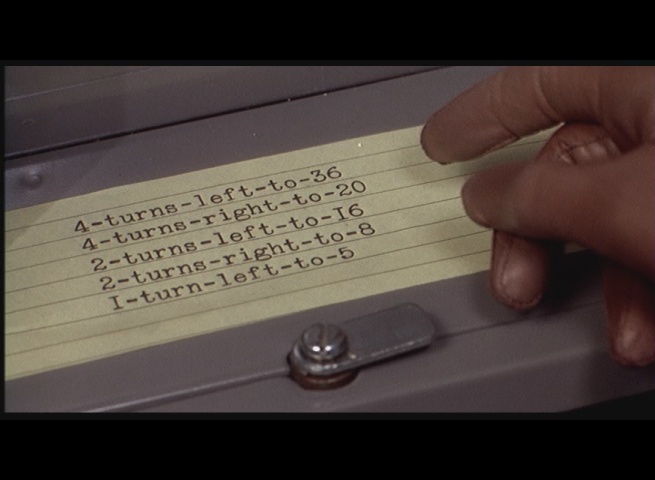- »The Code
The Safe's Code
The concept of the safe may be tied up with Marnie in a subtle visual way: there seems to exist a connection between the code to the Rutland safe and Marnie’s own progress towards a unified identity. The (yellow) card with the safe’s code appears on-screen at some length – and, the movie being Hitchcock’s own, it is probably fair to assume that its presence is no accident.

The surface patterns of the numbers reveal a facial connection to Marnie’s progress through the film towards a more unified and fundamental identity2. Indeed, the more abstract numerological approach could also extrapolate great harmony and unity, particularly from the number 5 on which the series settles.3 Through a series of repetitive interactions with safes, the numbers seem to suggest, Marnie might grow progressively closer to her unified identity.
[close this note]
They also amplify Hitchcock and Herrmann’s mutual obsession with the notion of … well, obsession: a repetitive halving of the number of turns, the repetitive (though realistic) switching from left turns to right turns, …
[close this note]
Principia Discordia; also, consider this excerpt (which, though spurious, is fairly typical of the numerological position on the matter): "Five is the symbol of human microcosm. The number of the human being. Human forms---the pentagon when arms and legs are out stretched. The pentagon is endless ---sharing the symbolism of perfection and power of the circle. Five is a circular number as it produces itself in its last digit when raised to its own power. The pentacle, like the circle symbolizes whole, the quincunx being the number of its center and the meeting point of heaven, earth, and the four cardinal points plus the center point."